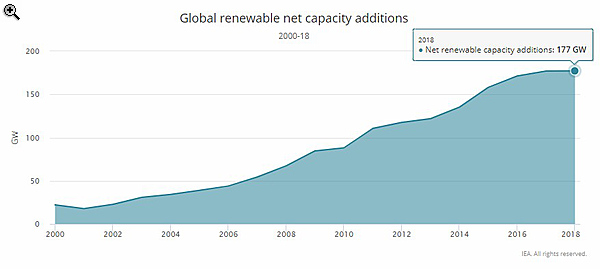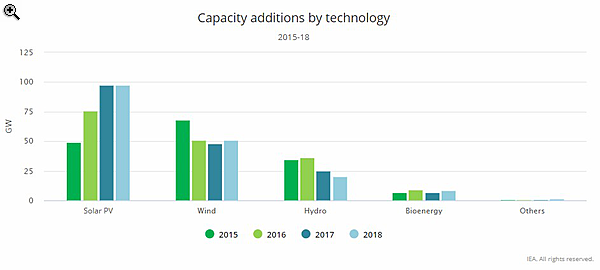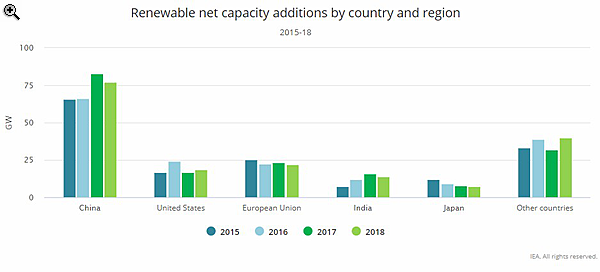Economy
Renewable power capacity stalls for 1st time since turn of millennium
The current situation and prospects of solar energy in Hungary, including changes to the regulatory environment will also be on the agenda of the Portfolio Clean Energy & Disruptive Trend Summit 2019 conference on 4 June. It’s not too late to register!
Last year was the first time since 2001 that growth in renewable power capacity failed to increase year on year. New net capacity from solar PV, wind, hydro, bioenergy, and other renewable power sources increased by about 180 Gigawatts (GW) in 2018, the same as the previous year, according to the International Energy Agency’s latest data.
That’s only around 60% of the net additions needed each year to meet long-term climate goals.
Renewables have a major role to play in curbing global emissions. Renewable capacity additions need to grow by over 300 GW on average each year between 2018 and 2030 to reach the goals of the Paris Agreement, according to the IEA’s Sustainable Development Scenario (SDS).

Since 2015, global solar PV’s exponential growth had been compensating for slower increases in wind and hydropower. But solar PV’s growth flattened in 2018, adding 97 GW of capacity and falling short of expectations it would surpass the symbolic 100 GW mark.

Capacity additions in the European Union, the second-largest market for renewables, saw a slight decline. Solar PV grew compared with the previous year, while wind additions slowed down. Policy transition challenges and changing renewable incentives resulted in slower growth of onshore wind in India and of solar PV in Japan.
Renewable capacity expansion accelerated in many emerging economies and developing countries in the Middle East, North Africa and parts of Asia, led by wind and solar PV as a result of rapid cost declines.


The current situation and prospects of solar energy in Hungary, including changes to the regulatory environment will also be on the agenda of the Portfolio Clean Energy & Disruptive Trend Summit 2019 conference on 4 June. It’s not too late to register!>
Cover photo by Shutterstock
Cover photo by Shutterstock
More in Economy
April 08, 2025 16:10
Erzsébet Bridge in Budapest to be closed for demonstration
Traffic jam can be expected
April 08, 2025 15:11
Hungary's central bank reaches five-point agreement with banks
Bank accounts will become simpler, more transparent and cheaper, the MNB says
April 08, 2025 13:05
Inflation did grow in some areas in Hungary in March
Central bank assesses latest inflationary developments
April 08, 2025 11:35
Massive hole in Hungary's budget
March gap almost record large
April 08, 2025 10:10
The whole world will pay for Trump's misjudgement - Péter Ákos Bod
Wrong economics cannot be the basis for successful economic policy
April 08, 2025 09:10
FMD triggers dramatic measures from Hegyeshalom to Esztergom
No new outbreak at this time, though
LATEST NEWS








